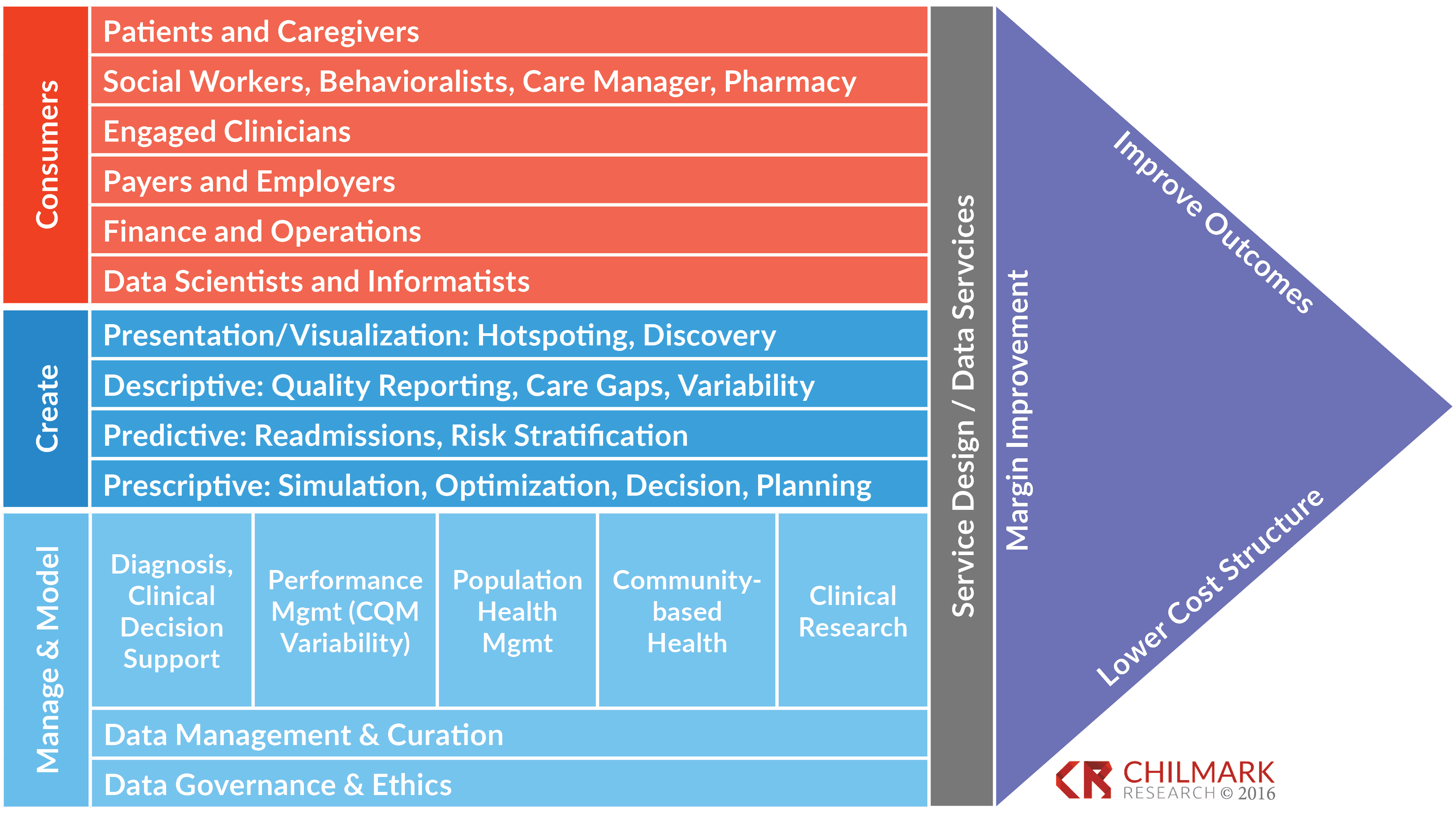Coming out of HIMSS 2016 I was struck by the sheer number of Population Health Management offerings. There are a myriad of vendors offering a multitude of data analytics offerings for providers and payers navigating the new waters of value-based care.
Of course we had lots of calls for innovation and the “Innovate or Die” refrain was heard loud and clear. But amidst the innovation talk and marketing of seemingly thousands of PHM analytics solutions lies the reality that transforming organizations to succeed at value-based care is far more than just new technology implementations.
In fact, we have all seen new technologies with seemingly great promise often fail to deliver. Who is at fault here is often not clear. The other constant drumbeat we hear across the economy is that organizations must become more “data-driven”. The future belongs to the “data-driven organization.” But what does this really mean?
At Chilmark Research we’ve noted in numerous reports that PHM solutions are still in the early days and best practices for assessing relative vendor strength of offerings are in short supply. So how can healthcare organizations (HCOs) do a better job of building up their analytics capabilities and data partnerships to see a more robust ROI on these investments and truly leverage data for better outcomes, higher patient satisfaction and lower costs?
By Adopting a Data Analytics Value Chain Model
To assist organizations in realizing these goals we feel that value chain analysis applied to health data analytics will provide a good starting point for HCOs to build an organization-wide health data analytics strategy.
A foundational element of the Health Data Analytics Value Chain that we have developed is the need to work with all stakeholders to build a data governance and curation framework that maps data stores, analytics needs, bottlenecks and assigns a data steward for ensuring that the governance approach has covered the necessary ethical and privacy issues. The governance framework will also help uncover differences in how various stakeholders think about data and analytics and shed insights on areas where additional training and resources are needed to achieve sufficiently high engagement levels with staff.
While I often hear reports that tools are not integrated into clinical flows seamlessly, a much more challenging issue is often the culture of analytics and value-based care are not firmly rooted in the organization. Mapping stakeholder needs in the course of the governance framework activities is a good way to begin building the culture of analytics into the organization.
The data analytics value chain model we have developed will be a useful tool for aligning analytics tools within the overall strategy of the firm, map stakeholders and facilitate assigning ownership of analytics programs and synchronizing all aspects of data management. In essence, the value chain approach can help align the human elements of the data analytics tools with the technology in a more comprehensive way.
Unfortunately, the piecemeal approach to analytics that most HCOs are guilty of has resulted in a convoluted mish-mash of data stores, standards and governance leading to poor performance, low adoption and ultimately, little if any ROI.
With only 20% of HCOs haviing a data governance strategy in place, there is a great deal of room for more strategic approaches to implementing data analytics and achieving better results for all stakeholders involved. At Chilmark Research we think the framework we offer combined with our market intelligence will provide an important service to our clients who will be increasing their investments and collaborations with vendors in the coming years.
To learn more about the Necessity of a Value Chain Model for Health Analytics, check out our most recent Insight Report here.





Care plan – definition of care plan by The Free Dictionary